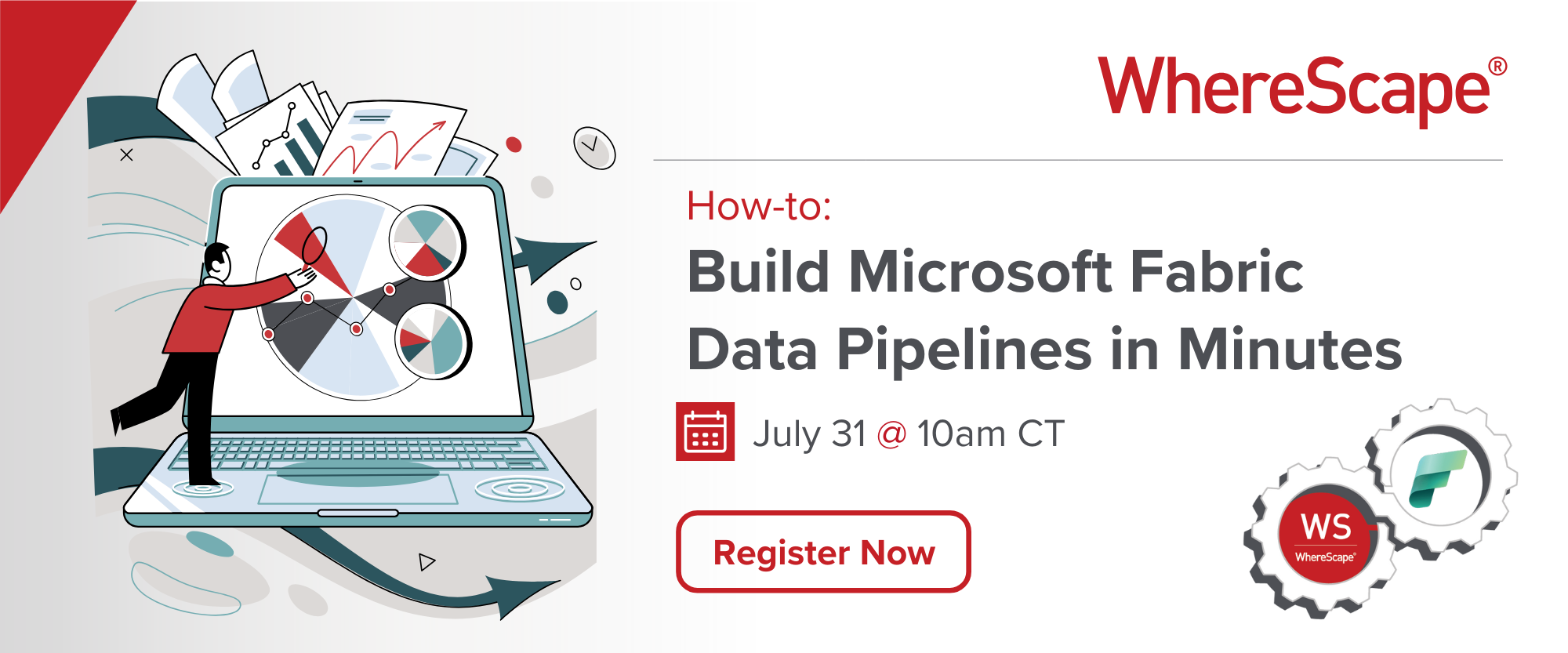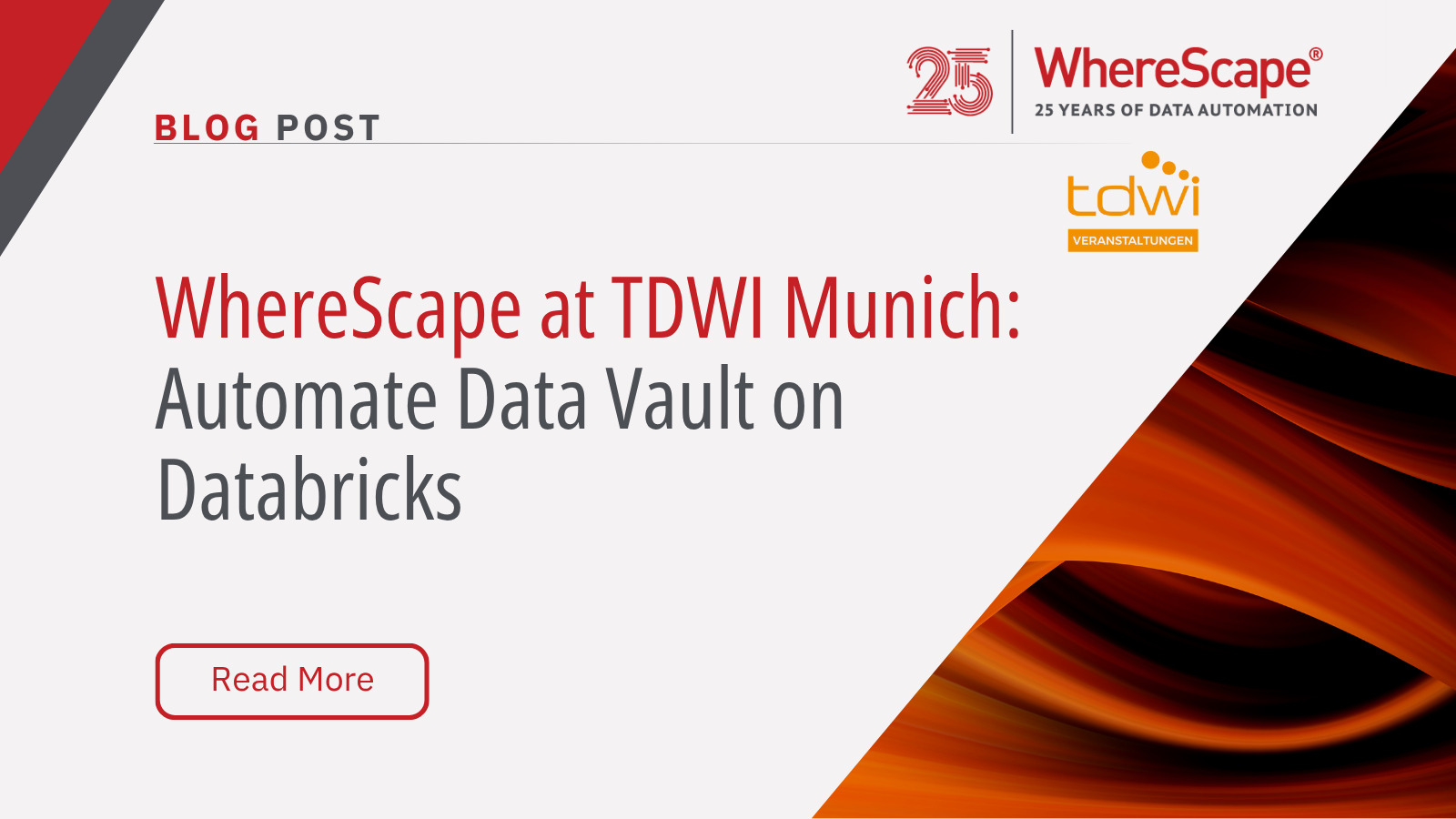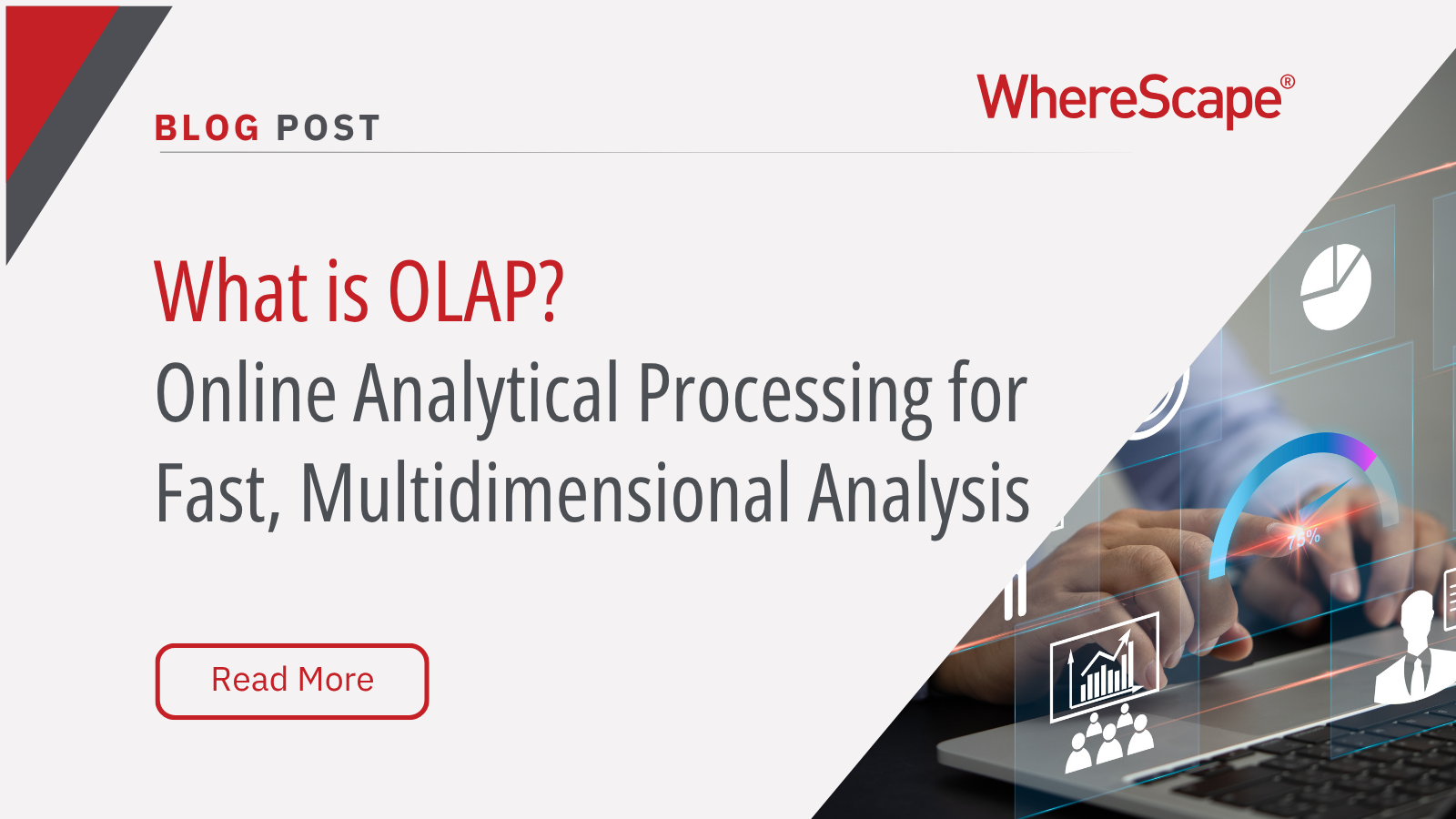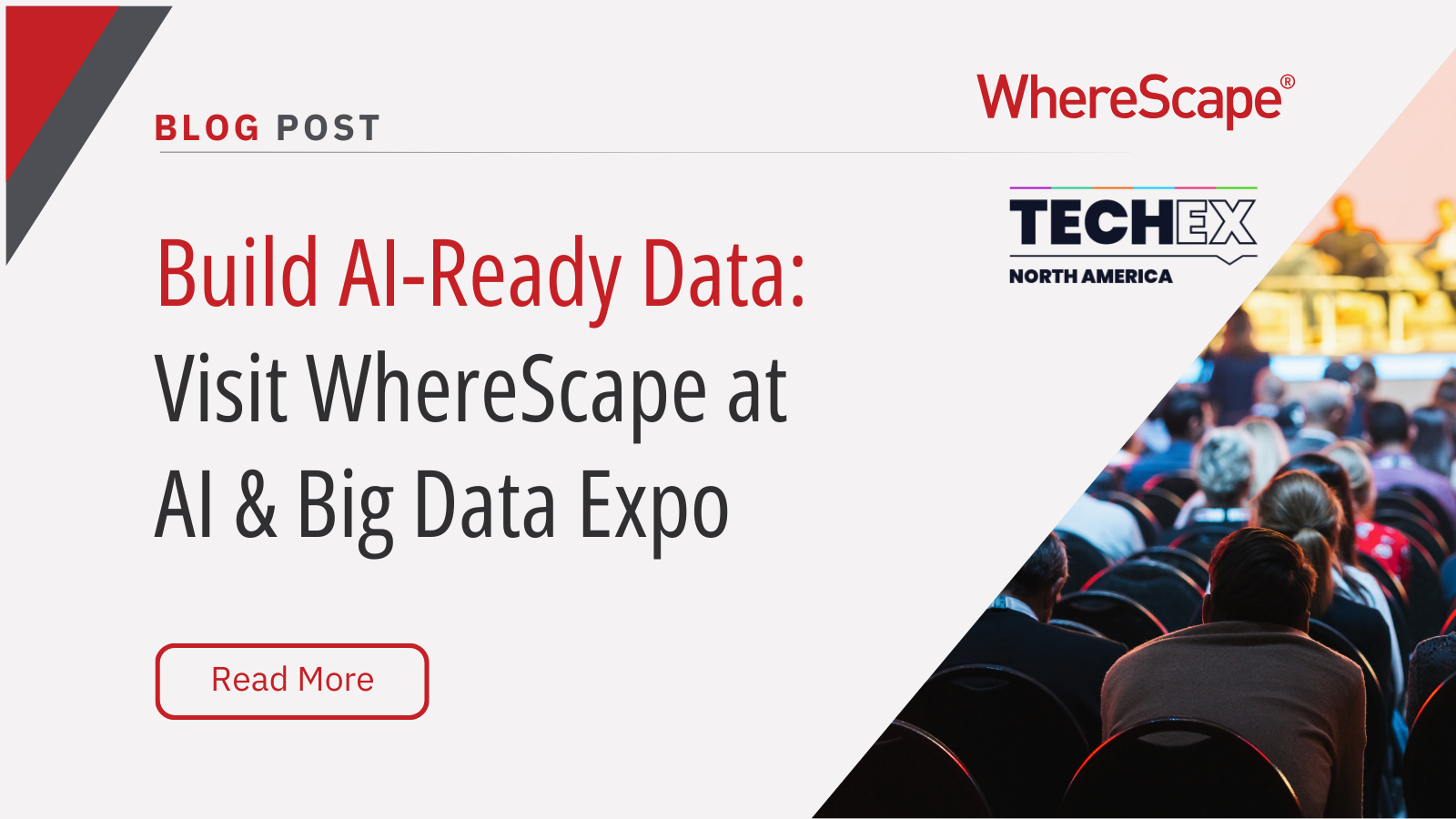Join our fast-and-friendly virtual tour to...
Data Warehouse Architecture
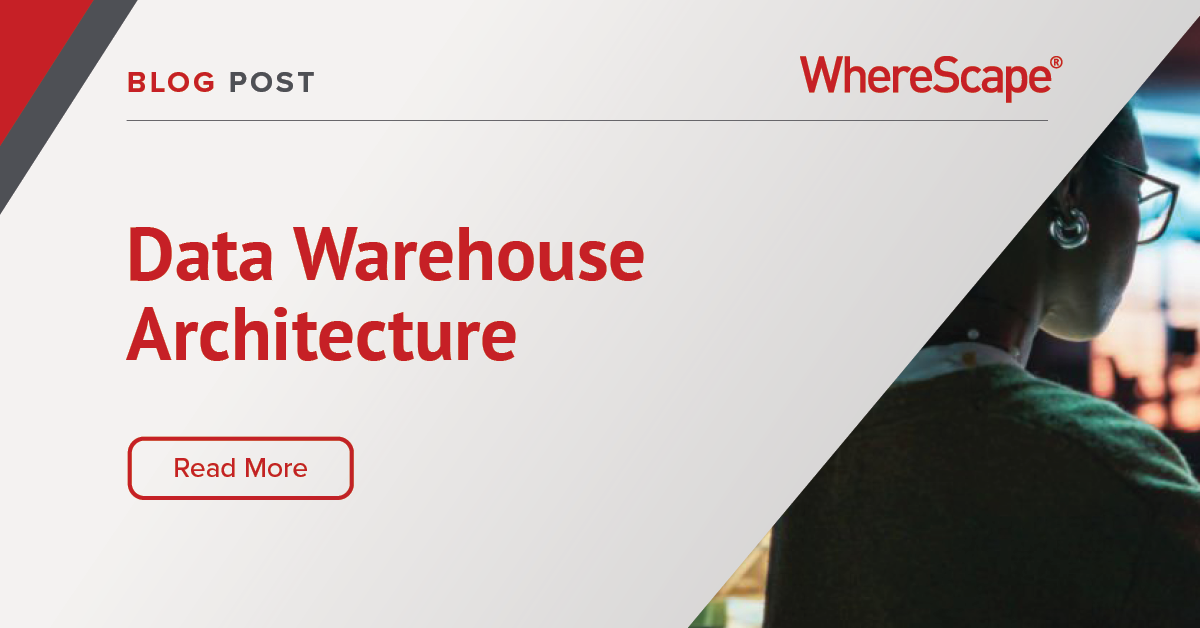
A data warehouse architecture defines the overall architecture of data communication. From processing the data to presenting it for end-clients computing, each data warehouse is characterized by some vital components within the enterprise. Data warehouse applications are designed to support online analytical processing (OLAP) which includes applications such as profiling, summary reporting, forecasting, and analyzing the trends. Unlike production databases, data warehouses are updated periodically from the operational systems.
How do Data Warehouses Work?
A data warehouse is subject-oriented as it offers information regarding the subject instead of an organization’s ongoing operations. The OLTP (Online Transactional Processing) data, that executes transaction-focused tasks, is accumulated in the production database on a regular basis which is then extracted, filtered, and then loaded inside an exclusive warehouse server from which users can access the information they require. An advantage of a data warehouse is that the previous data is not erased when new data is entered into it. A data warehouse is time-variant as the data stored in it has a high shelf life.
Data Warehouse Architectures are complex since they contain historical and cumulative data from single or multiple sources. These sources can be Traditional Data Warehouse, Cloud Data Warehouse, or Virtual Data Warehouse.
Data Warehouse Layers
One-Tier Data Warehouse Architecture:
The objective behind this type of architecture is to minimize the amount of data stored as there is a single layer. This is done to avoid data redundancy. This type of architecture is not very commonly used.</span
Two-Tier Data Warehouse Architecture:
Two-layer architecture has two separate layers for the physically available sources and the data warehouse. Due to network limitations, this type of architecture has connectivity issues. This architecture isn’t expandable and hence does not support a lot of end-users.
Three-Tier Data Warehouse Architecture:
Consisting of a top, middle, and bottom tier, this kind of architecture is very popular and is most widely used.
- Bottom Tier: This usually comprises the relational database system. In this layer, data is sorted, cleaned, transformed, and loaded using the back-end tools.
- Middle Tier: This is the OLAP server. It is implemented using either ROLAP or MOLAP models. This layer acts as a mediator between the database and the end-user as it presents an abstract view of the database.
- Top-Tier: This is also called the front-end client layer. Here, you can find all the tools and APIs that you need to get the data out from the data warehouse. Tools such as Query and reporting tools, Application Development tools, Data mining tools, and OLAP tools can be found here.
Data Warehouse Components
- Separation: Analytical and transactional processing should be kept separate from each other.
- Scalability: Use simple Hardware and software architectures that can manage and process large data volumes to meet the user’s growing requirements.
- Extensibility: The architecture should be able to perform new operations and technologies without much hassle and effectively.
- Security: Monitoring accesses are critical since strategic data is stored in the data warehouse.
- Administrability: Data Warehouse management should be easy and uncomplicated.
Data Warehouse Best Practices
- Create a data model: Identify your organization’s business logic and understand what type of data is vital to the organization before charting a strategy on whether this data will flow through the data warehouse in a dimensional, denormalized, or hybrid mode.
- Opt for a reputed data warehouse architecture standard: Make sure that your data model has a framework and a set of best practices to follow. Popular architecture standards include 3NF, Data Vault modeling, and star schema.
- Create a data flow diagram: It’s time to document how you want the data to flow through the data warehouse to meet your business requirements.
- Create a single repository: When dealing with such large amounts of data, it becomes important to have a single source of truth where all your data is consolidated.
- Utilize automation: Automation tools help in sorting vast amounts of data efficiently. This will ensure that your data is processed quickly and accurately.
- Permit metadata sharing: Choose the appropriate design approach as a top-down and bottom-up approach in Data Warehouse which can facilitate metadata sharing between data warehouse components easily.
- Enforce coding standards: Enforcing coding standards ensures the system’s efficiency. Carefully design the data acquisition and cleansing process for the Data warehouse.
WhereScape Data Automation
WhereScape eliminates the risks in data projects and accelerates time to production to help organizations adapt better to changing business needs. Book a demo to see what you can achieve with WhereScape.
WhereScape at TDWI Munich: Automate Data Vault on Databricks
WhereScape at TDWI Munich 2025: Automate a Full Data Vault on Databricks in Just 45 Minutes June 24–26, 2025 | MOC Munich, Germany As data complexity grows and business demands accelerate, scalable and governed data architectures are no longer optional—they're...
What Is OLAP? Online Analytical Processing for Fast, Multidimensional Analysis
Streamline your data analysis process with OLAP for better business intelligence. Explore the advantages of Online Analytical Processing (OLAP) now! Do you find it challenging to analyze large volumes of data swiftly? A Forrester study reveals that data teams spend...
Build AI-Ready Data: Visit WhereScape at AI & Big Data Expo
June 4–5, 2025 | Booth 202 | Santa Clara Convention Center As organizations scale their artificial intelligence and analytics capabilities, the demand for timely, accurate, governed, and AI-ready data has become a strategic priority. According to Gartner, through...
Automating Star Schemas in Microsoft Fabric: A Webinar Recap
From Data Discovery to Deployment—All in One Workflow According to Gartner, data professionals dedicate more than half of their time, 56%, to operational tasks, leaving only 22% for strategic work that drives innovation. This imbalance is especially apparent when...
What is a Data Model? How Structured Data Drives AI Success
What is a data model? According to the 2020 State of Data Science report by Anaconda, data scientists spend about 45% of their time on data preparation tasks, including cleaning and loading data. Without well-structured data, even the most advanced AI systems can...
ETL vs ELT: What are the Differences?
In working with hundreds of data teams through WhereScape’s automation platform, we’ve seen this debate evolve as businesses modernize their infrastructure. Each method, ETL vs ELT, offers a unique pathway for transferring raw data into a warehouse, where it can be...
Dimensional Modeling for Machine Learning
Kimball’s dimensional modeling continues to play a critical role in machine learning and data science outcomes, as outlined in the Kimball Group’s 10 Essential Rules of Dimensional Modeling, a framework still widely applied in modern data workflows. In a recent...
Automating Data Vault in Databricks | WhereScape Recap
Automating Data Vault in Databricks can reduce time-to-value by up to 70%—and that’s why we hosted a recent WhereScape webinar to show exactly how. At WhereScape, modern data teams shouldn't have to choose between agility and governance. That's why we hosted a live...
WhereScape Recap: Highlights From Big Data & AI World London 2025
Big Data & AI World London 2025 brought together thousands of data and AI professionals at ExCeL London—and WhereScape was right in the middle of the action. With automation taking center stage across the industry, it was no surprise that our booth and sessions...
Why WhereScape is the Leading Solution for Healthcare Data Automation
Optimizing Healthcare Data Management with Automation Healthcare organizations manage vast amounts of medical data across EHR systems, billing platforms, clinical research, and operational analytics. However, healthcare data integration remains a challenge due to...
Related Content
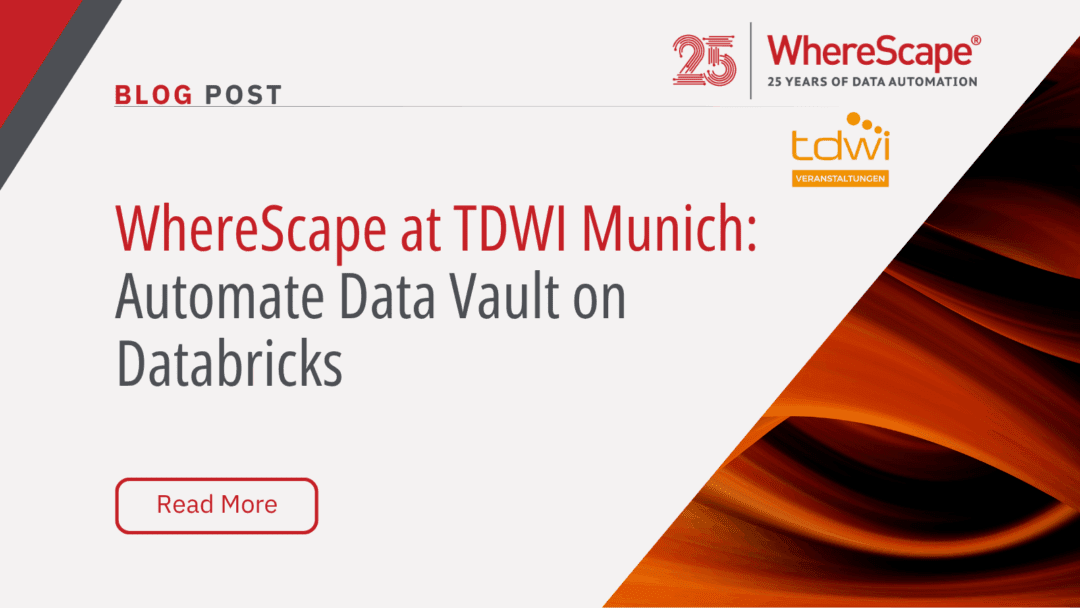
WhereScape at TDWI Munich: Automate Data Vault on Databricks
WhereScape at TDWI Munich 2025: Automate a Full Data Vault on Databricks in Just 45 Minutes June 24–26, 2025 | MOC Munich, Germany As data complexity grows and business demands accelerate, scalable and governed data architectures are no longer optional—they're...
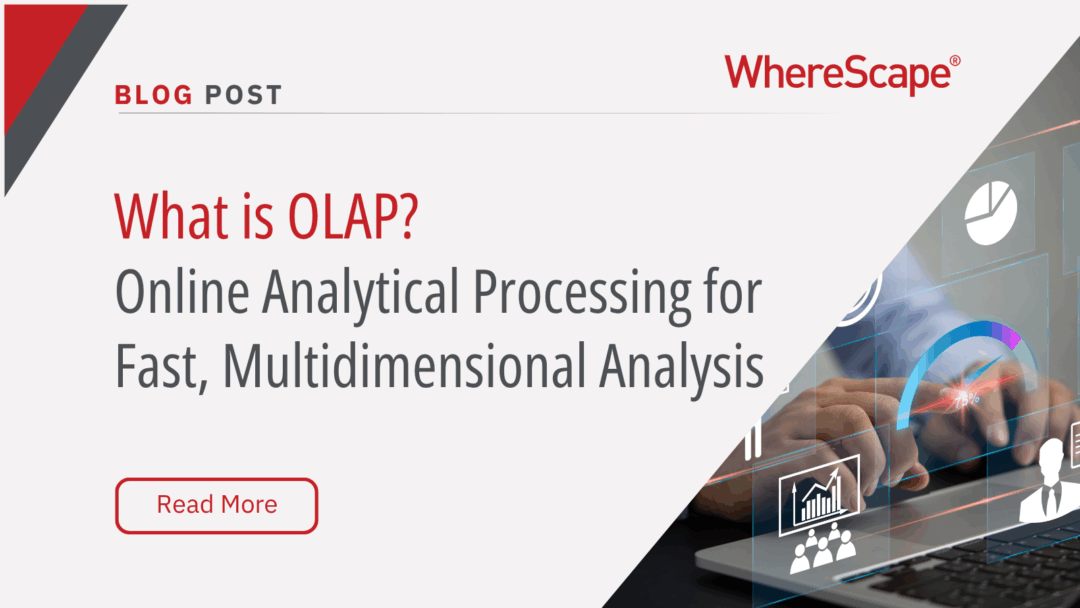
What Is OLAP? Online Analytical Processing for Fast, Multidimensional Analysis
Streamline your data analysis process with OLAP for better business intelligence. Explore the advantages of Online Analytical Processing (OLAP) now! Do you find it challenging to analyze large volumes of data swiftly? A Forrester study reveals that data teams spend...
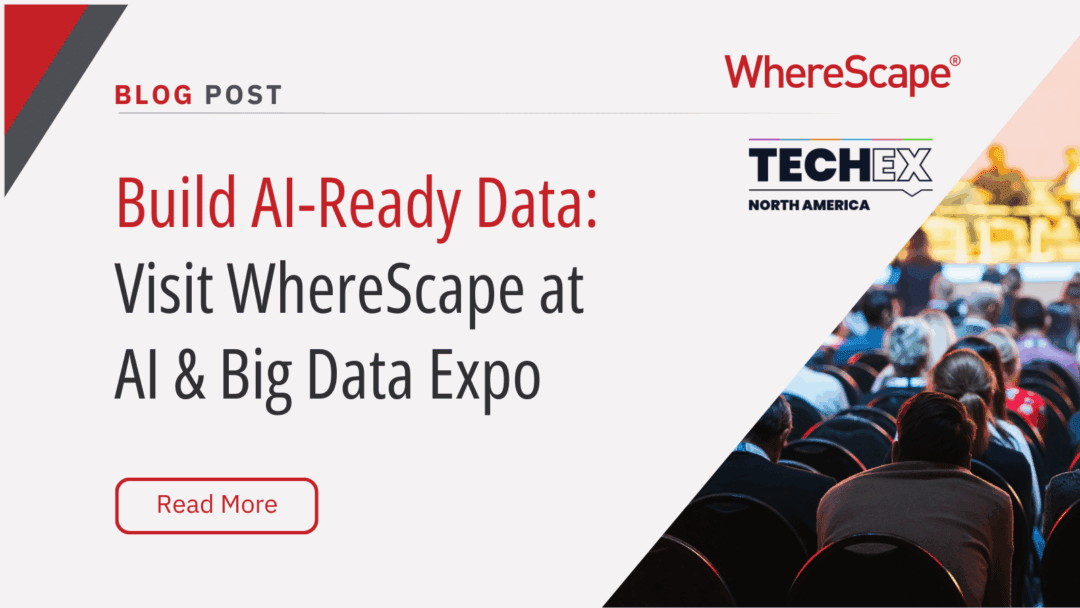
Build AI-Ready Data: Visit WhereScape at AI & Big Data Expo
June 4–5, 2025 | Booth 202 | Santa Clara Convention Center As organizations scale their artificial intelligence and analytics capabilities, the demand for timely, accurate, governed, and AI-ready data has become a strategic priority. According to Gartner, through...

Automating Star Schemas in Microsoft Fabric: A Webinar Recap
From Data Discovery to Deployment—All in One Workflow According to Gartner, data professionals dedicate more than half of their time, 56%, to operational tasks, leaving only 22% for strategic work that drives innovation. This imbalance is especially apparent when...

